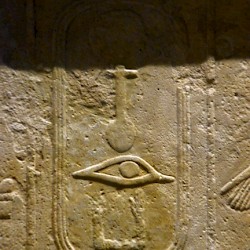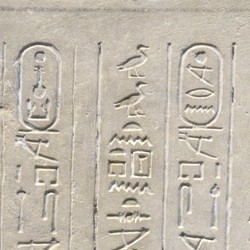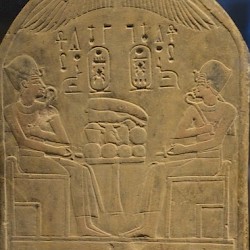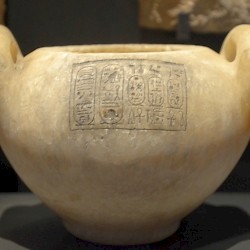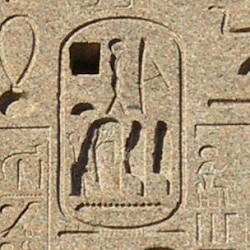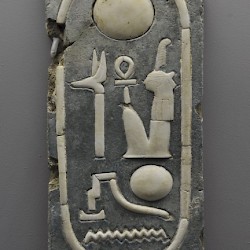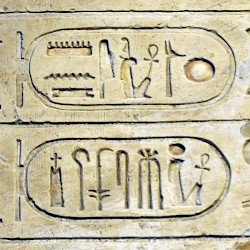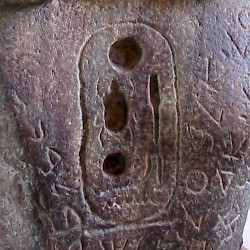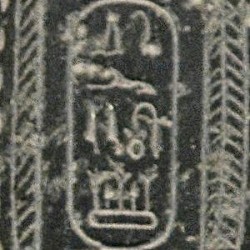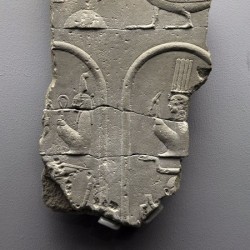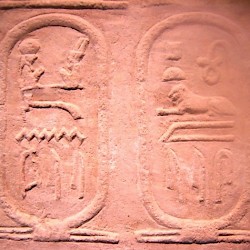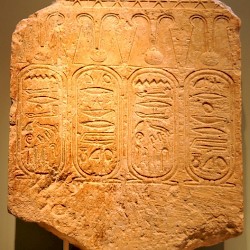Cartouche
Cartouche (Egyptian: shenu): an oval shape, used by the ancient Egyptians to write the names of their kings.
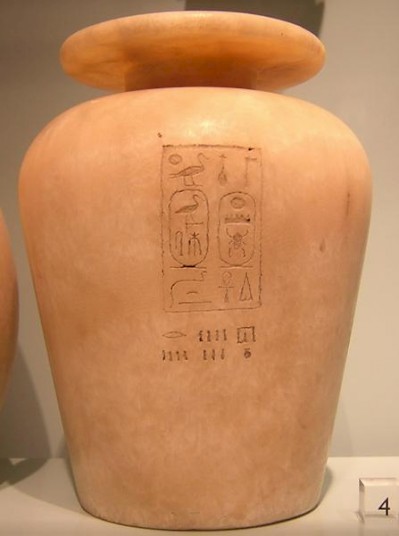
In hieroglyphic texts, you often see signs enclosed in oval shapes, which are called cartouches. They are quite famous because the discovery that characters thus enclosed were alphabetic letters representing the name of Egyptian kings was the crucial first step toward deciphering the ancient Egyptian writing system.
An oval with a line at a tangent to it, the cartouche or shenu (“that what is encircled”) looks like the loop of a rope and represents a shen ring, a circle that symbolizes eternity (cf. the snake Ouroboros). Because only incorruptible things can be eternal, a shen is also a protective symbol and the elongated ring – the cartouche, in other words – is thought to protect two of the names of the king. These two names are his throne name (or prenomen) and his personal name (nomen).
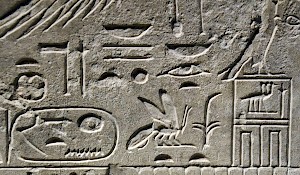
Before the Fourth Dynasty, Egyptian kings did not write their throne and personal names in cartouches. Instead, they employed their Horus name, a name that indicated how they wanted to present themselves, in a square serekh.
Cartouches could also be used to write the names of deities. On the fourth photo of the first line below, the two large cartouches indicate the names of the sun god Aton, while the two smaller ones contain the names of king Akhenaten and queen Nefertiti.
